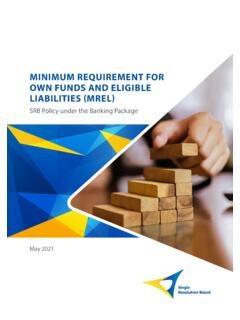Transcription of Syringe Services Programs Technical Package
1 Syringe Services Programs A Technical Package of Effective Strategies and Approaches for Planning, Design, and ImplementationDEVELOPED BYZulqarnain Javed, PhD, MPH1 Katie Burk, MPH2 Shelley Facente, PhDc, MPH2 Laura Pegram, MPH, MSW2 Aliyah Ali, MPH3 Alice Asher, RN, PhD31 Satcher Health Leadership Institute, Morehouse School of Medicine, Atlanta, Georgia2 NASTAD, Washington, District of Columbia3 National Center for HIV/AIDS, Hepatitis, STD and TB Prevention, Centers for Disease Control and Prevention, Atlanta, GA2020 Acknowledgments This document was developed by the National Alliance of State and Territorial AIDS Directors (NASTAD), under funding announcement CDC-RFA-OT18-1802 for, and in collaboration with, the Centers for Disease Control and Prevention (CDC). This project was informed and reviewed by many subject matter experts. Special thanks to the following contributors. Christopher Abert, Lillie Armstrong, Aaron Arnold, Alice Bell, Danae Bixler, Dita Broz, Heather Bush, Lauren Canary, Robert Childs, Allan Clear, Haley Coles, Natalie Cramer, Donald Davis, Sarah Deutsch, Maya Doe-Simkins, Zachary Ford, Kirsten Forseth, Nora Maria Fuller, Rebecca Goldberg, Carol Helwig, Mary Howe, Miss Ian, Grace Keller, Michael Kilkenny, Paul LaKosky, Pamela Lynch, Kerry Nolte, Mary Pounder, Lisa Raville, Daniel Raymond, Amanda Reese, Patrick Rezac, Monica Ridgeway, Christine Rodriguez, Alessandra Ross, Shoshanna Scholar, Hansel Tookes, Rafi Torruella, Gretchen Weiss, Brandie Wilson, Sarah Ziegenhorn, Sara Zeigler, and Dominick Technical Package is a product of the US Department of Health and Human Services , Centers for Disease Control and Prevention (CDC), located in Atlanta, Georgia.
2 Disclaimer: The findings and conclusions in this report are those of the authors and do not necessarily represent the official position of the Centers for Disease Control and of trade names and commercial sources is for identification only and does not imply endorsement by the National Center for HIV/AIDS, Viral Hepatitis, STD, and TB Prevention, the Public Health Service, or the US Department of Health and Human to nonfederal organizations are provided solely as a service to our users. These links do not constitute an endorsement of these organizations nor their Programs by the Centers for Disease Control and Prevention (CDC) or the federal government, and none should be inferred. CDC is not responsible for the content contained at these Citation Javed, Z., Burk, K., Facente, S., Pegram, L., Ali, A. & Asher, A. (2020). Syringe Services Programs : A Technical Package of Effective Strategies and Approaches for Planning, Design, and Implementation.
3 Atlanta, GA: US Department of Health and Human Services , National Center for HIV/AIDS, Viral Hepatitis, STD and TB Prevention, Centers for Disease, Control and Prevention; 1 Background 1 Framework 1 Guidance for Use 1 Benefits of Using this Document 2 Key Terms 2 Strategy I: Involve people with lived experience of the issues impacting your target population 5 Approach 1: Involve PWID in All Aspects of Program Design, Implementation, and Service Delivery 6 Approach 2: Create Meaningful Engagement and Service Delivery Opportunities for People with Lived Experience 6 Voices from the Field 7 Strategy II: SSP Planning, Design, and Implementation 8 Approach 1: Needs-based Syringe Distribution is the Best Approach 9 Approach 2: Delivery Model Must be Informed by Thorough Needs Assessment 10 Approach 3: Partnerships are Key to Successful SSP Implementation 11 Approach 4: SSPs Should Link PWID to Care, Whenever Possible 11 Voices from the Field 13 Strategy III: Core Versus Expanded Services 14 Approach 1: Syringe Distribution and Safe Disposal are Core SSP Services 15 Approach 2.
4 Expanded Services Complement Core Services and Establish Continuum of Care 15 Voices from the Field 17 Strategy IV: Collect Data to Inform Program Planning and Evaluation 18 Approach 1: All SSPs Should Collect Data on Trends, Needs, and Overall Program Effectiveness 18 Approach 2: Data Collection Should Be Minimal 19 Voices from the Field 20 Strategy V: Sustainability 20 Approach 1: Foster Relationships with a Variety of Stakeholders 21 Approach 2: Create a Sense of Shared Purpose to Reduce Stigma 22 Voices from the Field 23 Additional Resources 24 References 27 Syringe Services Programs : A Technical Package of Effective Strategies and Approaches for Planning, Design, and Implementation1 OverviewBackgroundThis Technical Package provides evidence of the effectiveness of strategies and approaches for supporting successful planning, design, implementation, and sustainability of Syringe Services Programs (SSPs). This document was developed by the Centers for Disease Control and Prevention s (CDC) National Center for HIV/AIDS, Viral Hepatitis, STD, and TB Prevention in partnership with the National Alliance of State and Territorial AIDS Directors (NASTAD).
5 It provides a broad framework for new and existing SSPs to ensure needs-based service delivery, reduce harms related to injection drug use, and link participants to Services that support their health and wellness. This was developed through a review of scientific literature as well as from the experiences and current practices of a diverse mix of SSP directors, key stakeholders, and experts in harm reduction. Technical packages are a key components of effective public health program Technical packages are designed to outline key proven interventions within a given public health program. This document was developed to highlight strategies with SSP implementation and service delivery that are known to be effective, to help users avoid the tendency of many public health Programs to adapt a scattershot of interventions, some of which might have only a small impact. Technical packages are intended to be reference guides, not manuals. This document provides references and resources for more information about any topic presented so that readers can gain a deeper understanding, if desired.
6 FrameworkWeidentify five main strategies for supporting new and existing SSPs including involving people with lived experience; planning, design, and implementation; providing core versus expanded Services ; collecting data to inform planning and evaluation; and ensuring program sustainability. Each strategy includes the following key components: Key Takeaways foreshadows section content. Approach describes how to make the strategy work. Evidence of Effectiveness in Achieving Intended Outcomes are the expected results of putting each strategy into practice, providing evidence from the literature demonstrating the effectiveness of the strategy. Voices from the Field include perspectives and opinions from key stakeholders and current SSP providers regarding their experiences in implementing the strategy. Table 1 outlines major strategies and approaches, which are discussed in detail in respective sections. Guidance for UseThis Technical Package is a resource for use by health departments, community-based organizations, and diverse stakeholders to guide effective SSP design, implementation, and service delivery.
7 The Technical Package provides evidence that the recommended strategies and approaches are effective in achieving the expected outcomes. SSPs can choose to use (or not use) the strategies and approaches supported by the evidence of effectiveness presented. The elements of this Technical Package are not intended to be used as standards for making decisions to open a new program or to close an existing program. New SSPs can use the Technical Package to ensure effective planning, design, and implementation; existing Programs can use the document to identify program operations that need improvement or identifying opportunities for program enhancement. Because of the unique needs of people who inject drugs (PWID) as well as local and regional variation in policies, politics, and resources, this document is not intended to be used to provide standards of practice for SSP operations. Based on the current status of the evidence on SSPs and the dynamic nature of SSP implementation locally, standardized models are not described.
8 Syringe Services Programs : A Technical Package of Effective Strategies and Approaches for Planning, Design, and Implementation2 Benefits of Using this Document This Technical Package is a vital steppingstonetoward establishing guiding principles and strategies to design SSPs and assess performance management, program evaluation, and continuous quality improvement in the provision of intended Services . By identifying evidence-based interventions and describing how Programs have implemented them in a real-world setting, users are provided with the information needed to establish a successful program that engages clients, meets their comprehensive needs, and has strong stakeholder support. Key Terms1:1 exchange a practice of restricting Syringe access by providing a participant only the number of syringes that the participant returns to the SSP for disposal (not a recommended practice see needs-based distribution).Booting an injection practice whereby a person repeatedly plunges and adjusts the volume of substance in a Syringe more than once during a single injection episode.
9 Booting has been shown to be preventive against accidental overdose and can create a more prolonged and pleasurable drug effect. Booting is not possible with retractable syringes, which are not recommended for distribution within reduction an approach to policies, Programs , or practices that aim to reduce the negative health and social impacts of substance C virus (HCV) a curable, chronic infection spread through infected blood that attacks the liver and over time can lead to cirrhosis or cancer of the liver if left human immunodeficiency virus; an incurable virus spread through infected blood, semen, vaginal fluids, or breast milk that attacks the immune system. HIV is manageable with medications but is often fatal if not appropriately equipment (aka works) equipment involved in injecting drugs including cookers, cottons, water, and alcohol wipes. This equipment is typically distributed along with syringes at an SSP to prevent bloodborne disease for treating opioid use disorder (MOUD) the use of medications, such as methadone, buprenorphine, or naltrexone, to treat opioid use disorder.
10 Previously referred to as medication-assisted treatment (MAT)Naloxone (Narcan) a synthetic drug that rapidly reverses an opiate overdose, by blocking opiate receptors in the nervous system. Naloxone can be injected into a muscle or sprayed into the nose, depending on the packaging of the drug. It is non-addictive, safe, and can be administered with minimal exchange another term for SSPs, less preferred by some because of its focus on needle distribution (less accurate than Syringe distribution) and implication of 1:1 exchange (not a recommended practice).Needs-based distribution a Syringe distribution practice that allows participants as many syringes as they say they need, regardless of how many syringes they return to the SSP for disposal. A best practice, for contrast, see 1:1 a biological response to too much of a substance or mix of substances; can be fatal (a type of poisoning).People who use drugs (PWUD) an acronym used to refer to people who use drugs, and generally preferred as person-first non-stigmatizing who inject drugs (PWID) an acronym used to refer to people who inject drugs and generally preferred as person-first non-stigmatizing language, which is not with lived experience while this term can be used more broadly, in the SSP context, it is used to refer to a person with current or former experience of substance use, typically a Services Programs : A Technical Package of Effective Strategies and Approaches for Planning, Design, and Implementation 3 Pre-Exposure Prophylaxis (PrEP) a medication for people at high risk for HIV infection, to prevent them from acquiring HIV when exposed.
















